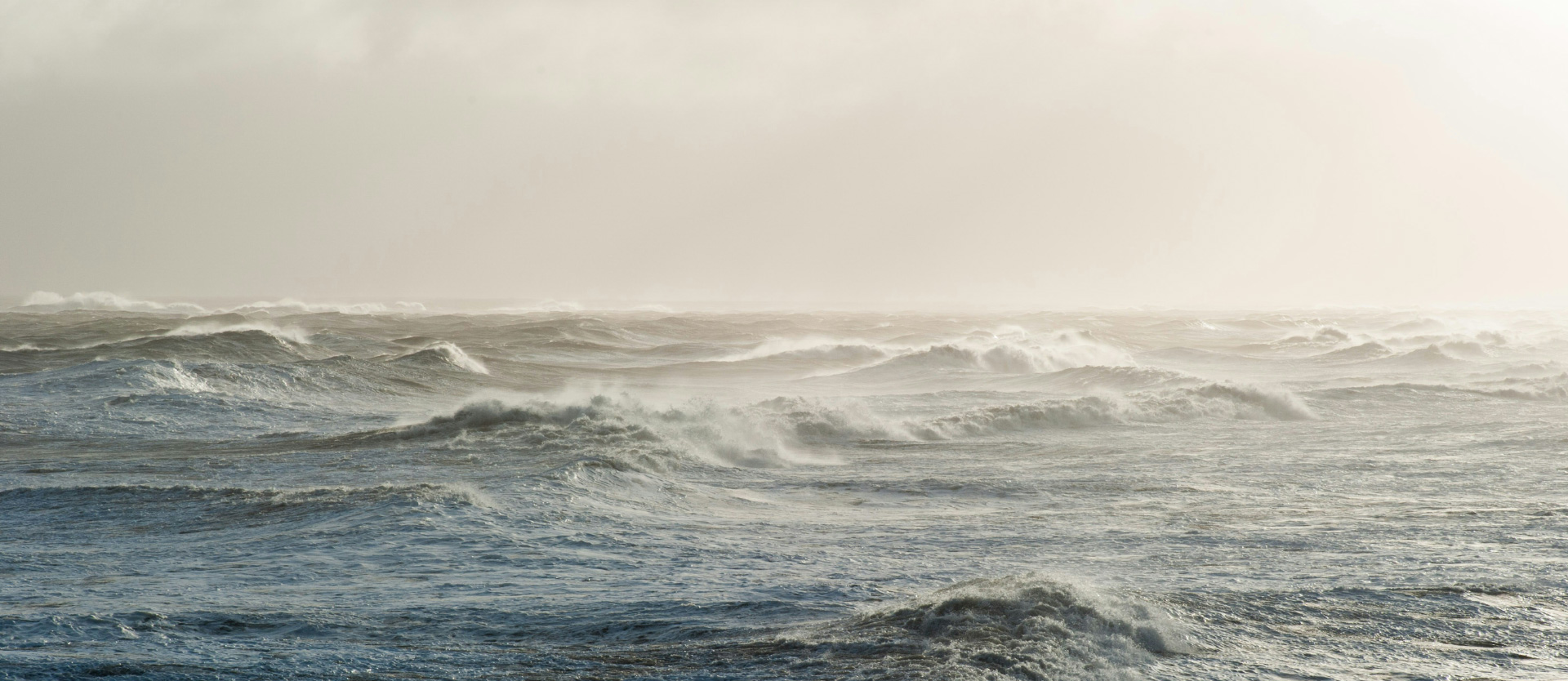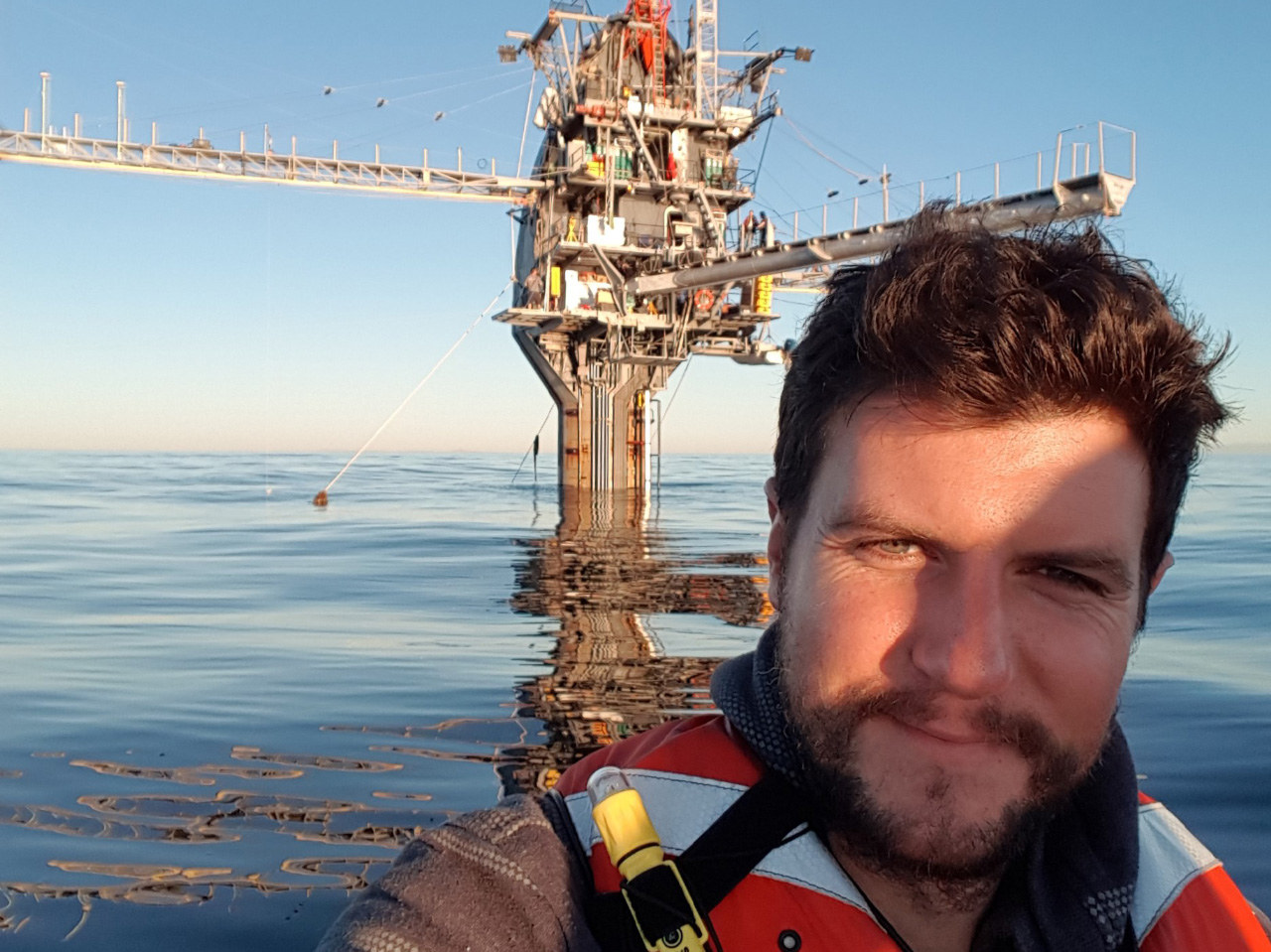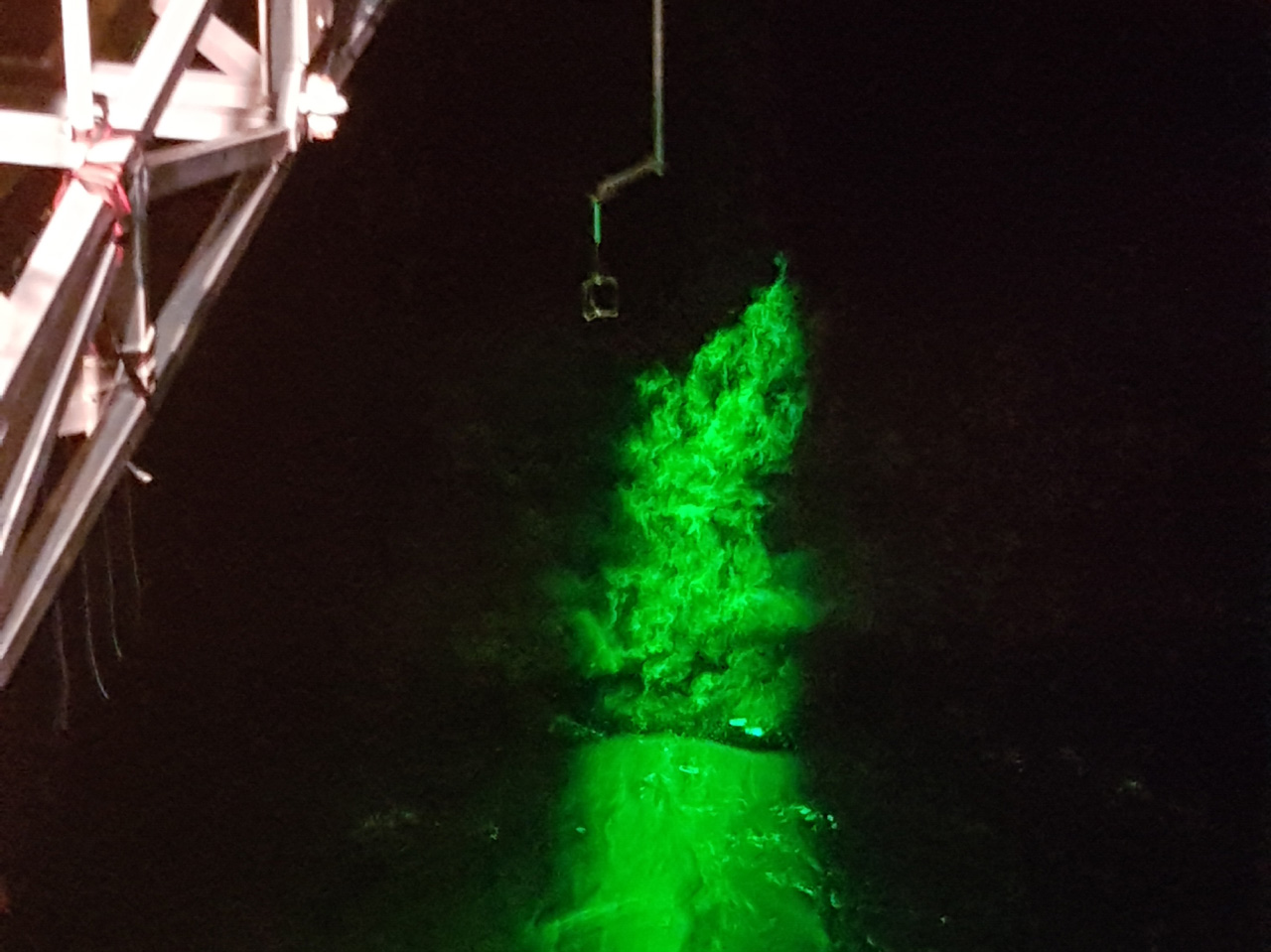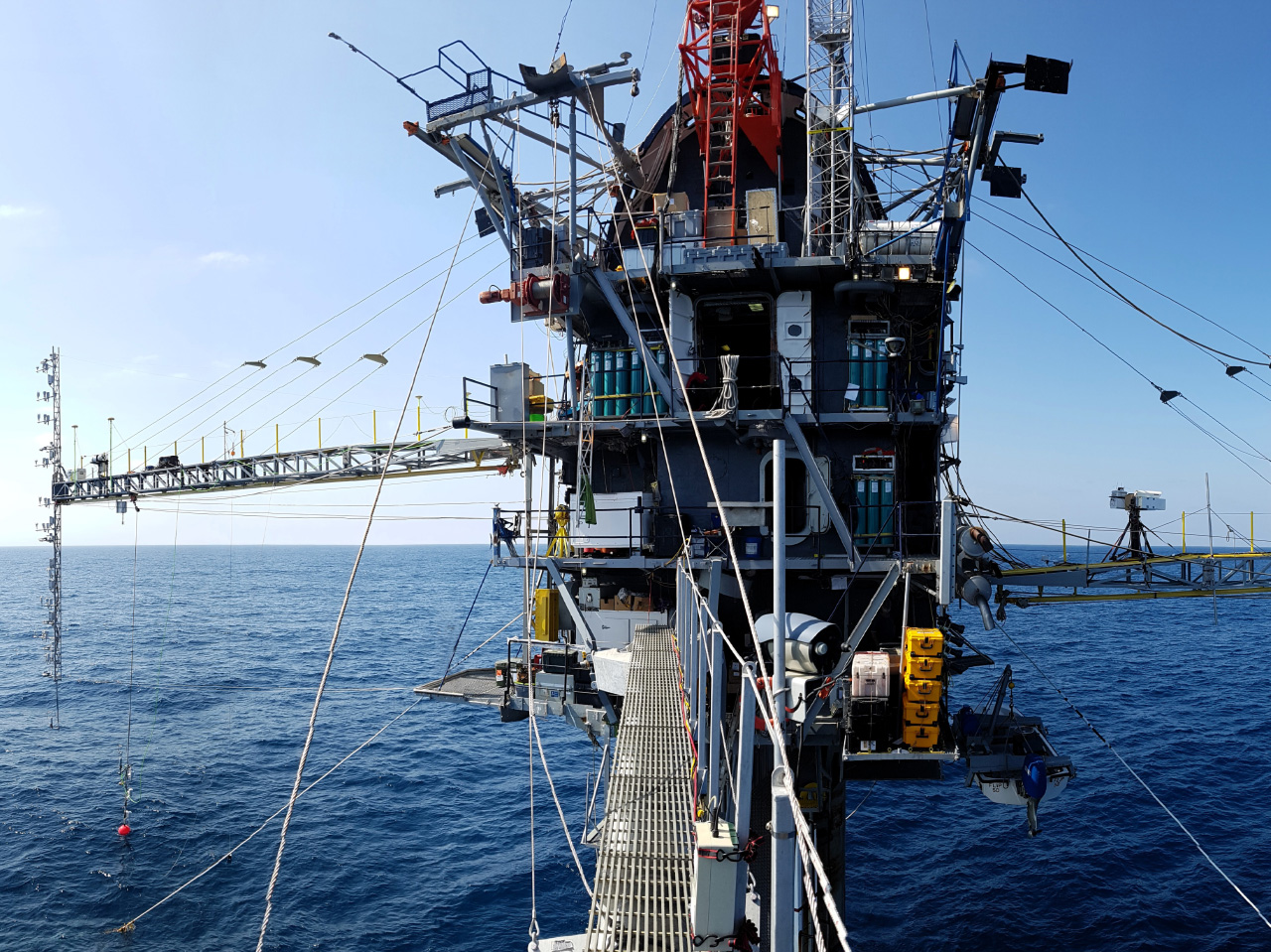
Between Wind and Water

“If you go out to the beach or on a boat, you see the waves, you see the wind,” says Marc Buckley. “We know that when the wind picks up, you see more foam, more white capping, breaking waves. We know that wind and waves interact. And yet, until now, we’ve never been able to get close enough to the ocean surface to precisely measure how the wind interacts with the water.” That’s exactly what he and his team have now made possible.

Marc Buckley with the FLIP (Floating Instrument Platform) research platform in the Pacific Ocean. The platform—half ship, half submarine—could rotate 90°. Photo: Hereon / Marc Buckley
Marc Buckley is an oceanographer at the Helmholtz Centre Hereon. He wants to understand how wind shapes the waves at the ocean’s surface and causes them to grow – for example, to better predict our weather and climate. That’s because in this process, the wind transfers energy to the waves – a crucial factor in the exchange of energy between the ocean and atmosphere. But the physics behind it has long been debated.
The new measurements show: there’s not just one mechanism at play, but several acting in parallel. Short waves, about a meter long, move more slowly than the wind. Their crests act like obstacles that split the airflow – similar to how an airplane wing works. This pressure difference transfers energy to the wave. Longer waves, around 100 meters in length, behave differently: they move faster than the wind and create circular air motions.

Using a powerful pulsed green laser, the researchers were able to visualize the interactions between wind and the water surface. Photo: Hereon / Marc Buckley
Using a powerful, pulsed green laser – operated during pitch-dark nights – the researchers were able, for the first time, to capture and analyze high-resolution images of these interactions between wind and ocean waves, just millimeters to meters above the water’s surface. The laser light scatters off microscopic water droplets sprayed into the air, making even the smallest air movements visible.
Similar images became familiar during the COVID-19 pandemic: smoke and laser light revealed tiny droplets emitted when people talked or coughed. These images impressively showed how the virus spreads through the air. “Here, it's a similar idea,” Buckley explains. “Except that we not only visualize, we actually quantify things. We measure very precisely the velocities of the flow.” The method isn’t new: the automotive industry uses it, for example, to determine how aerodynamic and fuel-efficient a car is, or how much drag and turbulence it creates.
About 25 years ago, researchers managed to measure airflow over water waves with this technique for the first time – but only in lab settings, not under real-world conditions. In 2017, Buckley and his team were able to apply it over the open ocean for the first time. But it took several years before they could publish their results. One reason: the data analysis was significantly more complex, and the researchers had to first develop suitable methods for it. That’s because measurements and interpretation are both much harder at sea. And a pinch of luck was needed too.
“In a lab, you can just go in and turn on the wind simulator,” Buckley says. “Out at sea, you need exactly the wind in the right direction, the waves and so forth. So, you need a little bit of luck and also motion correction.”
The latter was necessary to account for the movement of the measuring equipment above the sea. This required a whole series of sensors, all of which had to function perfectly – at every moment of the measurement. Without this correction, the data would have been useless.
Another key decision was the choice of platform. A conventional ship would have distorted the measurements: waves reflecting off the ship, wind shadows created by its structure. “We wanted to measure real life wind and waves,” Buckley emphasizes.

On board FLIP. The researchers carried out their measurements on the research platform. Photo: Hereon / Marc Buckley
“FLIP” made it possible – the now-retired research platform (short for “FLoating Instrument Platform”). Half ship, half submarine, the structure could stand upright in the Pacific Ocean within less than 30 minutes less than a minute and float like a stable tower in the water.
That, says Buckley, was a unique experience: “Once we arrived on location, everybody lied down on the floor, feet against the wall. And then you flip – and the wall becomes the floor and you're standing up. It's an amazing feeling.”
The research mission lasted 30 days. Buckley and his colleagues spent 20 of those days setting up the measuring equipment – attached to a roughly 20-meter-long wind mast extended sideways from the platform.
On the fifteenth day, disaster struck: the laser broke – the most expensive part of the entire setup. Buckley recalls: “I was on the satellite phone with the manufacturer. They said, ‘Okay, you can open it up and try to fix it.’ So, we did – we had no choice, we were out there. The technician said: ‘It’s fine. Exceptionally, this will not void the warranty. Go for it.’”
And indeed, the oceanographer managed to repair the laser: “And then the wind picked up. And then, by chance, during the ten last days there, we got some fantastic measurements. Those were very long nights full of measurement work. It was quite exciting.”
The new findings could now help improve atmospheric and ocean models – and thus make weather and climate predictions more accurate. In the future, Buckley does not only want to measure wind dynamics but also the movements in the water itself – to gain an even deeper understanding of the interplay between wind and waves.
Original publication:
Buckley, M.P., Horstmann, J., Savelyev, I. und Carpenter, J.R.
Direct observations of airflow separation over ocean surface waves.
Nat Commun 16, 5526 (2025).
doi.org/10.1038/s41467-025-61133-1












